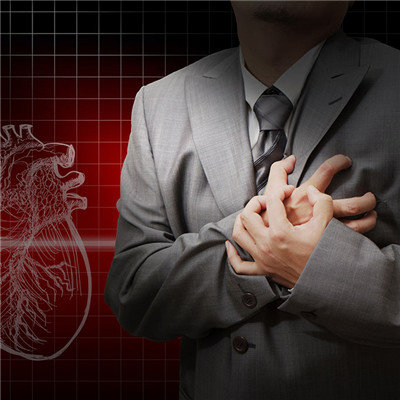The symptoms of coronary heart disease
summary
In heart disease, coronary heart disease is a common and high incidence. Coronary heart disease generally occurs in the elderly, which seriously affects the health of patients and even threatens their lives. Therefore, in daily life, we, especially the elderly, should do a good job in the prevention of coronary heart disease, so as to achieve early prevention, early detection and early treatment, and increase the therapeutic effect of the disease. The following is to introduce the general symptoms of coronary heart disease.
The symptoms of coronary heart disease
Angina pectoris: it is characterized by a feeling of pressing and distension behind the sternum, accompanied by obvious anxiety, lasting for 3 to 5 minutes. It often radiates to the left arm, shoulder, jaw, throat, back, and can also radiate to the right arm. Sometimes it can involve these parts without affecting the posterior sternum. Exertion, emotional excitement, cold, satiety and other conditions that increase myocardial oxygen consumption are called exertional angina pectoris, Rest and nitroglycerin release. Sometimes angina pectoris is not typical, can be manifested as tight breath, syncope, weakness, belching, especially in the elderly. According to the frequency and severity of attack, the patients were divided into stable angina pectoris and unstable angina pectoris.
Myocardial infarction: about a week before infarction, there are often prodromal symptoms, such as angina pectoris at rest and slight physical activity, accompanied by obvious discomfort and fatigue. During the infarction, the symptoms were persistent severe compression, stuffy feeling, even knife like pain, located behind the sternum, with constant wave and the whole anterior chest, especially on the left side. Some patients can radiate downward along the ulnar side of the left arm, causing tingling sensation in the left wrist, palm and fingers. Some patients can radiate to the upper limb, shoulder, neck and mandible, mainly on the left side. The site of pain was the same as that of previous angina pectoris, but it lasted longer and the pain was more severe. Rest and nitroglycerin could not relieve the pain. Sometimes the performance of abdominal pain, easily confused with abdominal disease. Accompanied by low fever, restlessness, sweating and cold sweat, nausea, vomiting, palpitations, dizziness, extreme fatigue, dyspnea, sense of imminent death, lasting more than 30 minutes, often up to several hours. If you find this situation, you should see a doctor immediately.

Asymptomatic myocardial ischemia: many patients have extensive coronary artery occlusion but do not feel angina pectoris, and even some patients do not feel angina pectoris during myocardial infarction. Some patients had sudden cardiac death and were found to have myocardial infarction during routine physical examination. Some patients had arrhythmia due to ischemia in ECG or coronary angiography due to positive exercise test. This kind of patients have the same chance of sudden cardiac death and myocardial infarction as patients with angina pectoris, so we should pay attention to the usual heart health care.

matters needing attention
The above is to introduce several common symptoms of coronary heart disease, some patients with coronary heart disease symptoms are not particularly obvious, and easy to be ignored. I hope everyone in life to have a regular hospital physical examination, do a good job in disease screening, when found with coronary heart disease, we must go to the hospital as soon as possible for relevant examination and treatment, actively cooperate with the treatment of disease.














